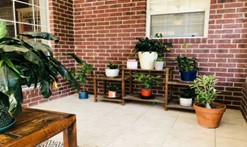
Editor’s Note: This is the twenty-fourth in a series of spotlights on Mathematics and Statistics Faculty. Dr. Md Istiaq Hossain joined us as a professor in Fall 2023.
Do you have a hobby or collect something? How did you get into that?
I really love to travel around, not just the USA, but also the whole world, to see different places and taste the amazing food and experience culture. I am particularly fond of driving and hiking.
Tell us about an adventure you had, or would like to have.
I would love to have a road trip throughout the US and see beautiful mountains, hike, and camp there without worrying much about the regular day job. More specifically, I would like to go to Angels Landing in Zion National Park, Utah.
What was one of your biggest successes or failures?
One of my biggest successes is to get a PhD in Mathematics. And I believe that this came out from a failure (read “lifelong learning experience”) in my high school career. I used to be overconfident when it comes to mathematics, and only looked at solutions to problems in my notebook without actually practicing them using pencil and paper. In the actual test, I scored 47 out of 100. Things got worse when I lied to my father, saying the score didn’t come out yet. Eventually, however, he came to know about this from one of my teachers in school.
What kind of music, books, movies, sports, games, cars, etc. (pick one or more) do you like? Is there any particular reason?
I like rock bands, and one of my favorite bands is Scorpions. I have watched the performance of their 2001 Acoustica concert (which was held in Convento do Beato, Lisbon, Portugal) several times on YouTube. I wish I could see them performing live sometime in my lifetime. In addition, I also like to play and watch Cricket, although nowadays, due to busy life schedules, it has become much more challenging to keep up with the updates.
What do you study? How did you get into that? Are there any real-world applications of your area of study?
My primary research centers around the mathematical modeling of interacting species (e.g., predator-prey). In particular, I develop and analyze discrete-time models that account for ecological, environmental, or human impacts on such species. This may help us better understand the complex dynamics, give us valuable insight into understanding the intriguing nature of species interactions, and may guide us to find effective management policies and conservation strategies.
A major part of my modeling pursuit is to include increasing complexities based on species properties and their interaction with other species (e.g., stage structure, intraguild predation, etc.) in the ecosystem. As a specific case, we have developed a discrete-time predator-prey mathematical model where both prey and predator population have two stages in their lifetime – juvenile and adult populations for each species. This is a funded project through an internal grant at SFA that will involve undergraduate and graduate students and is set to be conducted during the Spring and Summer of 2024.
What projects (academic or otherwise) are you currently working on?
One of the scenarios that puzzled ecologists is the wide existence of intraguild predation/parasitism (IGP) in productive environments, where predation also happens among potential competitors that use similar resources. Our investigation includes to explore under what conditions the species coexists and what resource distribution is needed to result in various ecological scenarios including the existence of rich dynamics (such as chaos).
What is the closest you have ever come to dying?
We had an accident in a red light when someone hit our car from the back. That is the same day when my wife was finishing 40 weeks of her pregnancy with our first child. It still scares me to the death.
What was the best piece of advice you were ever given?
Consistency and hard work are the key to most of the successes in life.
Compete against yourself and not with others.
The thing that really makes you cool and unique is something that I would never have thought to list here. What is it?
I am really patient with my two kids!






